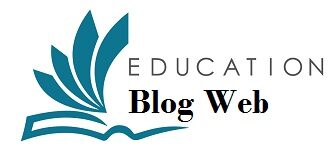Poetry – The Spontaneous Overflow of Powerful Feelings

Have you ever gone in search of words to define poetry and ended up with multiple interpretations? If you have, then welcome to the club. Limiting poetry in words is impossible. The infinitude state is one of the most celebrated features of poetry. Based on individual perception, the overall meaning of the poem changes from one to the other. Like a coin, this unique nature of poetries has positive as well as negative sides. It can offer multiple interpretations to a single text and enhance the immenseness of the poetry. At the time, it can also make the poetry get much different from the conception of the poet.
Most kids might have heard the famous words of the famous poet William Wordsworth, “Poetry is the spontaneous overflow of powerful feelings: it takes its origin from emotion recollected in tranquillity.” The quality of poetry is determined by the intensity of emotions and feelings depicted in the poetry and developed within the minds of the readers. Poetry can be considered one of the most influential products of human imagination. This rapturous form of literature is used to exhibit different shades of humanity, nature, etc. The poem in English offers a transcendental experience to individuals from every stage of life. Teaching children how to enjoy poetry from a young age is one of the greatest gifts that parents and teachers can offer to them. It grants them the chance to explore the vastness and intensity of poetry.
Types of Poetic Devices
Before stepping into the different types of poetic devices, let us pass through their definition, application etc. In simpler terms, poetic devices are the tools used by poets to uplift the quality of their poetries. Do you know the reason why poems are given a predominant position in kids’ learning process? Because it boosts creativity and imagination within them. Learning exercises like rhyming poems for kids will help them understand the structure and beauty of poetries. Let us offer such interesting activities to inspire them to enjoy and write beautiful poems. By making them learn how to write poems, let us pave the way for their artistic explorations.
Poets use rhyme, rhythm, and literary devices like metaphor, simile imagery, personification, pathetic fallacy, alliteration, enjambment, juxtaposition, oxymoron etc., to make their readers get to penetrate into the souls of the feelings that they are trying to express. A short explanation of some of the main poetic devices often used by the poets is listed below.
-
Alliteration:
Alliteration is a literary device that reflects the succession of sounds in two or more nearby words.
-
Assonance:
Assonance is the repetition of vowels in one or more nearby words.
-
Blank verse:
Blank verse refers to poetry written without rhyme but with a regular metre.
-
Enjambment:
The term ‘enjambment’ is derived from a French word which means to step over and is a poetic device that can be defined as the continuation of wordings across a line break.
-
Personification:
Personification is a literary device that is used by writers to describe an idea or an object with a resemblance to human characteristics.
Understanding these poetic devices will help children to develop a basic idea of how to write a poetic analysis. Moreover, it will strengthen their comprehension of close analysing of the structuring and internal meaning of the text. Apart from favouring academic progress, listening to poems plays a significant role in shaping the perception of kids. For more entertaining and learning exercises, visit BYJU’S website.







